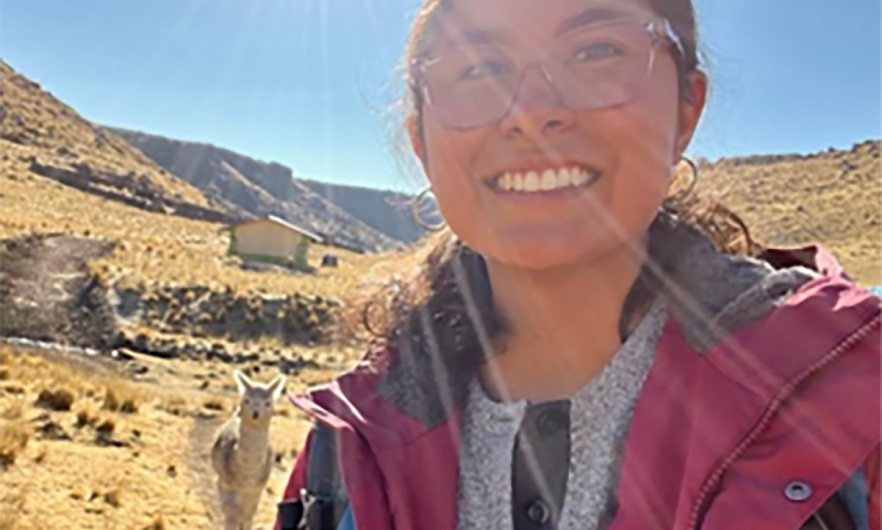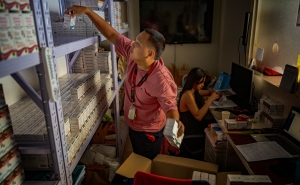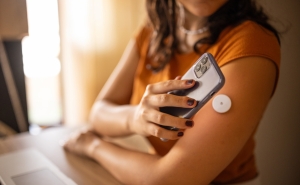HBS Field Placement Journals: Sofía Espinoza
MSPH student Sofía Espinoza reflects on her field placement experience as a research assistant with PRISMA ONG in Puno, Perú.

To prepare for domestic and international career opportunities in public health, all MSPH in Health Education and Health Communication students participate in a full-time field placement for at least six months.
In her HBS Field Placement Journal, second-year student Sofía Espinoza reflects on her experience as a research assistant with PRISMA ONG in Puno, Perú.
Anticipated graduation date: May 2026
Advisers: Lauren Dayton, PhD, and Eileen McDonald, MS
Field placement organization name: PRISMA ONG – Puno, Perú
Field placement role: Research Assistant
Why did you choose your field placement experience?
In searching for a field placement, I knew I wanted to dedicate my time to understanding health contexts and disparities in Latin America or among Latino populations in the United States. During the interview process, I learned about PRISMA, a Peruvian NGO that designs and implements innovative research studies and projects to improve access to opportunities for vulnerable people, it became clear that this role offered not only opportunities to contribute to quantitative analyses and data management, but also the chance to engage more broadly with ongoing projects.
While much of my work has focused on analyzing data to understand the impact of air pollution exposures on blood pressure, I have also had the unexpected opportunity to support field data collection for a Fulbright-Fogarty project on ophthalmology. This combination of technical and field-based experiences has made the placement especially rewarding and aligned with my interests in both research and community health.
How did you discover (and land) your field placement?
I discovered this opportunity through the Global Health Established Field Placement offered by the Johns Hopkins Center for Global Health. I was especially drawn to the placement in Puno, Perú—the only Spanish-speaking option in South America. As someone who is half Ecuadorian and Mexican, I felt compelled to pursue a project in a region closely tied to my family’s roots.
How was your overall experience at PRISMA?
It has been a privilege to work alongside an amazing interdisciplinary team of biologists, nurses, psychologists, community health workers, and data analysts. My time here has broadened my perspective on community-based research, showing me the importance of approaching study design and implementation with a cultural lens and being mindful of cross-cultural considerations each step of the way.
What does a typical day of your field placement look like?
Two days each week, I join field visits that begin around 4 a.m., traveling to rural participant households. Using Google Maps and flashlights to navigate, I typically visit three to six homes per outing, where I collect survey data on environmental exposures, conduct visual acuity and slit-lamp exams, and capture fluorescein images of residents' eyes to share with our partner ophthalmologist. Meals are often shared in the field: Quinoa drinks and bread with cheese for breakfast, local restaurants for lunch, and popsicles on the drive back, before I return to the office to upload the data and deliver results to the ophthalmologist.
On office-based days, my tasks range from cleaning ambulatory blood pressure and household air pollution data, developing cardiac risk scores and z-scores, and updating tables. I also attend team meetings, meet with my PI, and collaborate with the Fulbright-Fogarty medical student whose project I support.
What have you found most rewarding about your field placement?
The most rewarding aspect of my field placement has been immersing myself in the rich culture of the Andean region. In Puno, known as the country’s “capital of folklore,” there are weekly parades of dancers in traditional clothing and music. Experiencing daily life in Puno alongside visits to rural communities has given me a deeper appreciation for the region’s cultural traditions and the stories of the people who uphold them. Further, my workplace has biweekly soccer and volleyball games, which allow for another unique and fun way to pass time.
What advice do you have for current or prospective students as they think about their own field placement opportunities?
I would encourage current and prospective students to stay motivated and remember that there are countless outstanding opportunities within the Bloomberg School and beyond. What helped me most was having a clear sense of the populations and health issues I wanted to focus on, and being intentional about networking to identify opportunities aligned with those interests.
How has your field placement influenced (or changed) your public health career goals?
The clinical exposure I’ve gained through this field placement has expanded my career goals to include the possibility of medical school, in addition to my original intention of pursuing a PhD. It has also deepened my commitment to global health equity and strengthened my interest in community health and human-centered design, reinforcing my desire to pursue a career at the intersection of research, clinical practice, and community engagement.
This interview has been edited and compressed. Views expressed are the subject's own.





